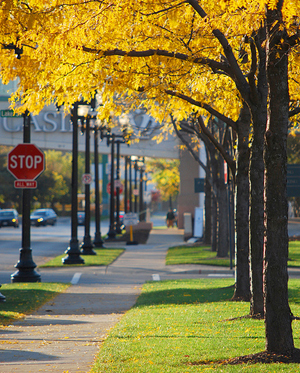Urban Forestry Strategy Paper
Urban Forestry Strategy Summary
 Trees throughout the region constitute a valuable urban and community forest resource that contributes significantly to human health and quality of life. Beyond aesthetic value and social well-being, the urban forest provides essential ecosystem services to clean the air, protect and clean water, support biodiversity, shelter homes, and conserve energy. As we prepare for a region with 2.8 million new residents by 2040, the services provided by the urban forest will be invaluable. Growing a more robust, healthy urban forest will help achieve greater community livability and quality of life in the region.
Trees throughout the region constitute a valuable urban and community forest resource that contributes significantly to human health and quality of life. Beyond aesthetic value and social well-being, the urban forest provides essential ecosystem services to clean the air, protect and clean water, support biodiversity, shelter homes, and conserve energy. As we prepare for a region with 2.8 million new residents by 2040, the services provided by the urban forest will be invaluable. Growing a more robust, healthy urban forest will help achieve greater community livability and quality of life in the region.
Table of Contents
- Introduction
- Definition of Urban Forest and Urban Forestry
- Benefits
- History
- Landowners and Land Managers
- Urban Forest Composition and Extent
- Regional Challenges: Sustaining Appropriate Tree Canopy Cover Over Time
- Opportunities
- Strategies for Regional Leadership
A sample of findings:
- Urban trees provide significant benefits that can be represented in dollar figures. Generally speaking, the bigger the tree, the larger the benefits.
- The urban forest is not managed by one single entity that could plan and implement a comprehensive strategy to maximize its benefits. Along with residential property owners, forest preserve and conservation districts, municipalities, transportation agencies, park districts, and other organizations all have a role to play.
- It is important to protect the existing tree canopy as well as to ensure that additional trees are planted under conditions conducive to long term survival. Some communities have tree preservation ordinances in place to protect trees. In some cases, standards in subdivision and zoning ordinances may need to be reviewed to ensure they provide satisfactory conditions for tree growth.
If you're interested in learning more about this topic, please download the urban forestry strategy paper prepared for CMAP by staff at the Morton Arboretum. Comments and criticisms are encouraged. Contact Jesse Elam at jelam@cmap.illinois.gov or 312-386-8688.
Photo "Golden Walkway" by James Jordan.